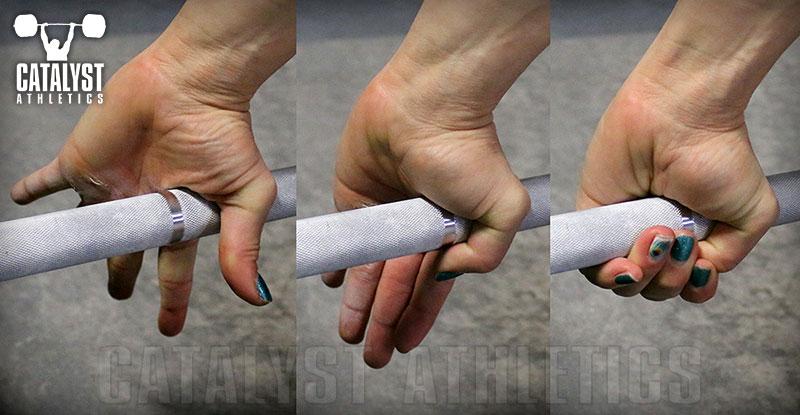Table of Contents
- Proper Can Grip Techniques for Optimal Control
- The Role of Thumb Placement in Enhancing Actuator Precision
- Common Thumb Positioning Mistakes and How to Avoid Them
- Expert Recommendations for Improving Grip Comfort and Efficiency
- To Conclude
Proper Can Grip Techniques for Optimal Control
Achieving precise control when using a spray can begins with mastering how your fingers, especially the thumb, interact with the actuator. The thumb should rest comfortably on the top of the actuator, allowing for a natural, even pressure during the spray. This position not only enhances accuracy but also reduces finger fatigue, enabling longer and more consistent use. Positioning your thumb slightly forward on the actuator tip ensures smoother spray release and helps avoid uneven paint deposition.
Key elements for optimal grip include:
- Placing the thumb on the actuator’s center for balanced pressure
- Using the index and middle fingers to support the base of the can, stabilizing movement
- Maintaining a relaxed grip to prevent hand strain and improve fluidity
- Aligning the wrist with the direction of the spray for controlled application
Adopting these techniques transforms how you handle spray cans, making your strokes more precise and your finish cleaner. Proper thumb placement is a subtle yet powerful adjustment that significantly influences overall control and consistency.
The Role of Thumb Placement in Enhancing Actuator Precision
Precision in actuator performance is increasingly linked to the subtle but critical factor of thumb placement. By positioning the thumb correctly on the actuator surface, users can achieve significantly enhanced control over the force applied, reducing unnecessary pressure that often leads to inconsistent output. Proper thumb placement distributes the mechanical load evenly, which not only improves the response time but also extends the durability of the actuator mechanism.
Research and user feedback highlight several key benefits of optimal thumb positioning, including:
- Improved tactile feedback: The thumb’s placement increases sensory input, allowing for more precise adjustments during operation.
- Balanced pressure application: Prevents overexertion on actuator components, minimizing wear and tear.
- Enhanced ergonomic comfort: Users experience less fatigue when the thumb naturally aligns with the actuator surface.
Implementing these thumb placement strategies can revolutionize actuator usage in various applications, from industrial machinery to consumer electronics, underscoring the nuanced role of ergonomics in technical precision.
Common Thumb Positioning Mistakes and How to Avoid Them
When gripping a can actuator, a frequent error involves placing the thumb too high or too low on the surface, leading to inconsistent spray patterns and thumb fatigue. Many users tend to rest their thumb tip directly on the edge, which can result in uneven pressure and hinder smooth activation. Another common slip is curling the thumb inward tightly, which restricts natural movement and reduces control. To maintain optimal precision and comfort, place the thumb pad squarely in the middle of the actuator, allowing a firm yet relaxed grip.
- Avoid thumb tip placement: Resting on the edge reduces effective surface area and compromises pressure distribution.
- Steer clear of overly curled thumbs: This tension hampers flexibility and leads to quicker muscle strain.
- Focus on aligned thumb positioning: A centered, flat thumb pad provides greater control and consistency.
Expert Recommendations for Improving Grip Comfort and Efficiency
To maximize control and minimize hand fatigue during use, experts emphasize the importance of precise thumb placement on the actuator. Position your thumb so that its pad rests firmly-but not forcefully-on the actuator button, allowing for smooth, responsive operation without slipping. This strategic placement enables better leverage and reduces the strain on surrounding digits. Additionally, maintaining a relaxed grip around the can body improves overall comfort and prevents unnecessary tension, ensuring longer usage sessions remain efficient and enjoyable.
For enhanced grip performance, specialists recommend several practical tips that users can easily integrate into their routine:
- Keep hands dry: Moisture reduces friction, leading to slippage. Use a towel or grip-enhancing gloves if necessary.
- Optimize posture: Align your wrist naturally to prevent awkward angles that lessen thumb control.
- Customize pressure: Apply just enough force to activate the actuator without overexerting, preserving tactile feedback.
- Practice deliberate movements: Controlled, intentional thumb presses increase precision and reduce fatigue over time.
To Conclude
In conclusion, mastering the proper can grip with correct thumb placement on the actuator is essential for both safety and efficiency. Understanding the mechanics behind this seemingly simple action can prevent strain and enhance control, whether in professional or everyday settings. As manufacturers continue to innovate actuator designs, staying informed about optimal grip techniques will remain crucial for users aiming to achieve the best results.Check Our Other Blogs
- StunGun – Your Trusted Source for Stun Guns, Laws, and Self-Defense Tips
- PepperSprayLaws – Your Trusted Resource for Pepper Spray Information
- StunGunLaws – Your Trusted Guide to Stun Gun Legality and Safety




